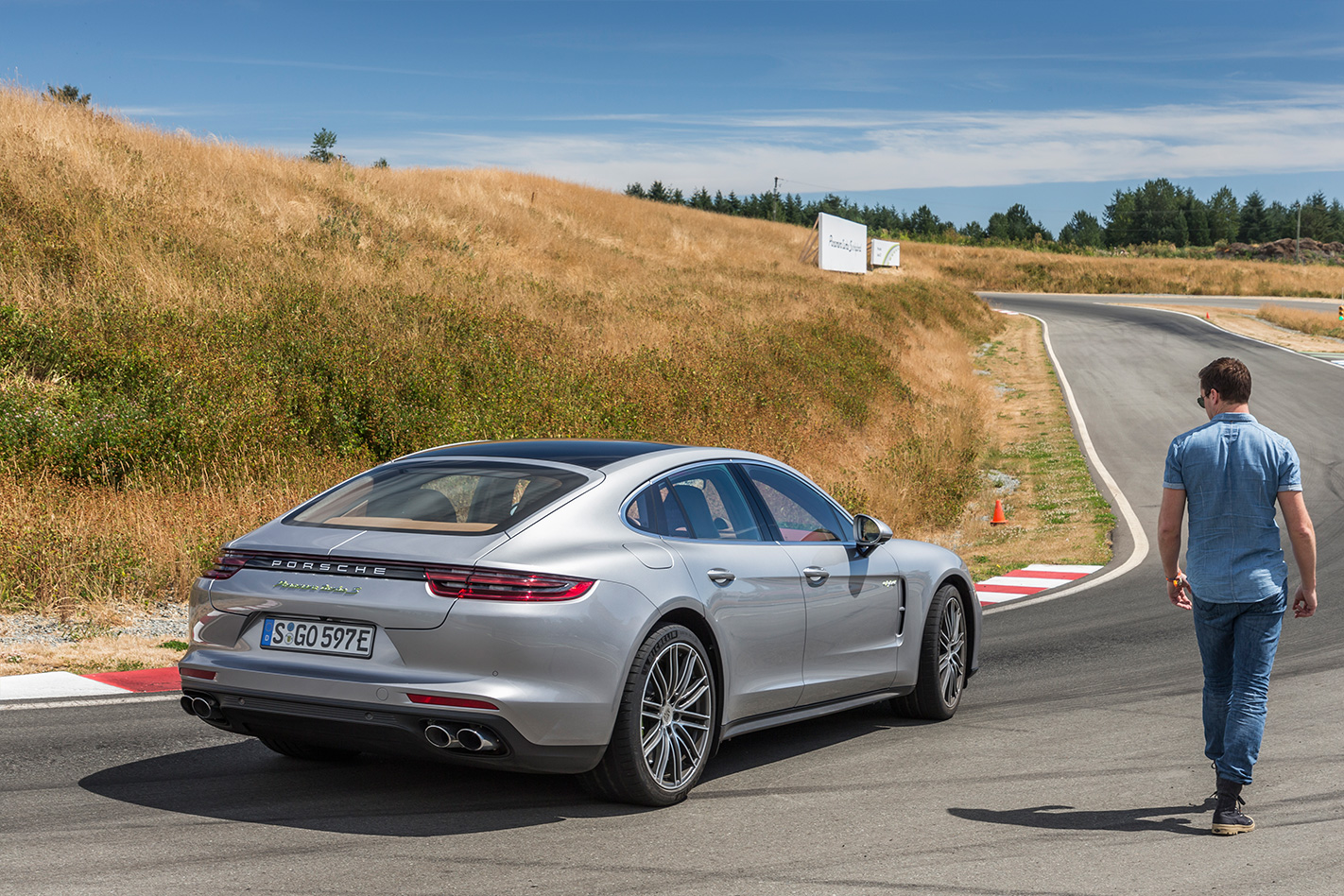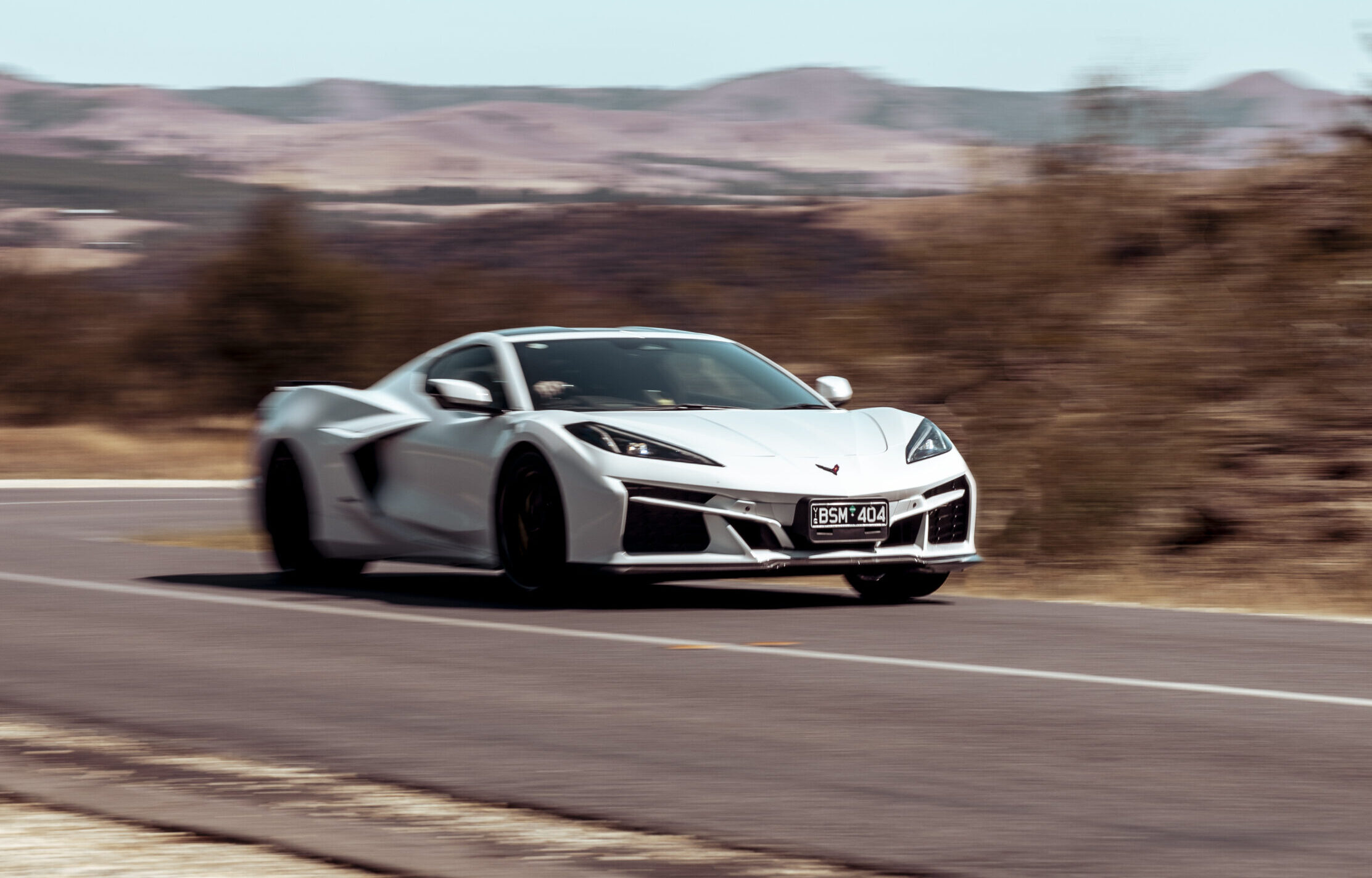PORSCHE is not alone among revered sports car brands in taking the odd evolutionary turn that initially sits about as comfortably as a sandpaper scarf around a purist’s neck.
When the iconic 911 dropped its air-cooled engine for the 996 generation, for example, diehards ran around throwing their Nomex undies on bonfires. Then, more recently, when the entire Carrera range went turbo, Stuttgart flags were burned in the streets.
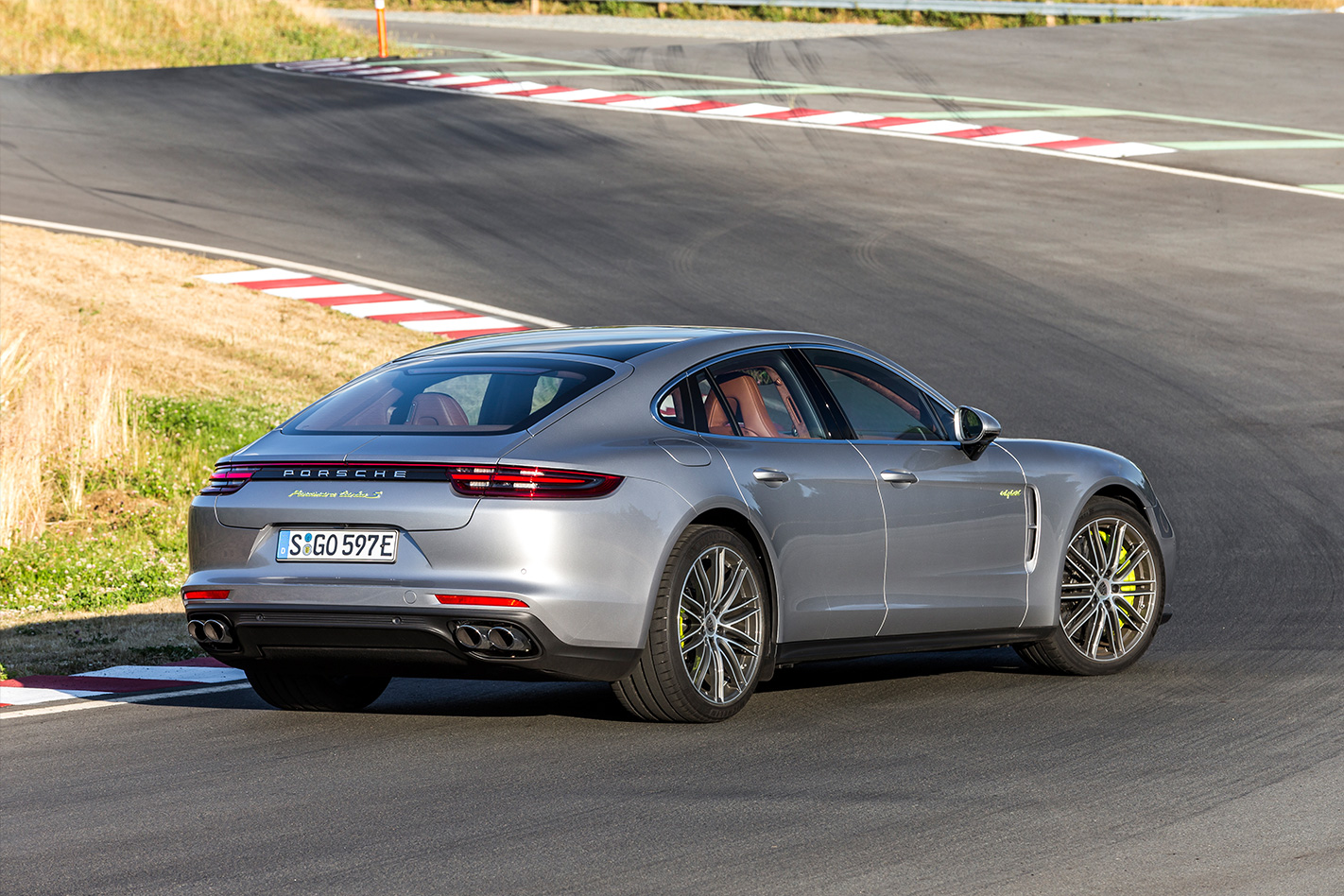
The Panamera took the converse approach by starting out with weird proportions that polarised Porsche punters right up until its replacement, thankfully, with a second-generation version that looks more like a 911 reared on a diet of growth hormones – proportionally lovely, just bigger.
This car is the new Panamera flagship; a balls out horizon eater that cements its performance credentials through the addition of an electrically assisted powertrain.
While the Panamera 4 E-Hybrid uses much the same electric hardware as this Turbo S E-Hybrid, that model plugs a gap between Panamera 4 and 4S; with its focus on minimal consumption. But with this range-topper, Porsche global communications manager Hermann-Josef Stappen explains that the company sets out to prepare fans for halo models that deliver electrifying performance from a battery.
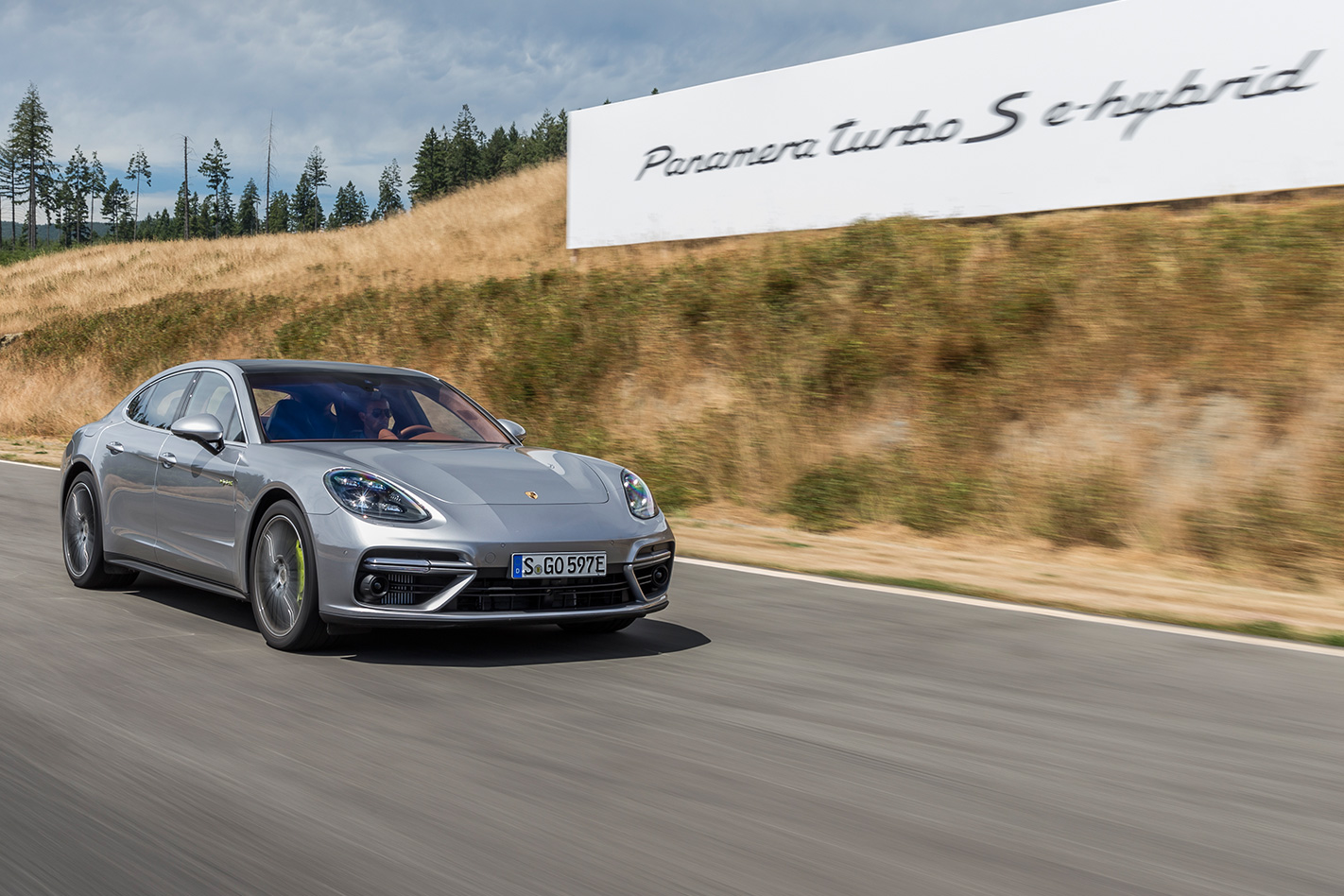
But before we get into how convincingly the Panamera Turbo S E-Hybrid delivers on its high-performance promise, let’s look at the hardware that sets it apart from the regular Turbo. In the combustion-only car, a 4.0-litre turbo V8 sends 404kW and 770Nm to all four wheels, but the hybrid Turbo S adds to this with a 100kW motor incorporated into the eight-speed dual-clutch gearbox, drawing from a 14kWh lithium-ion battery.
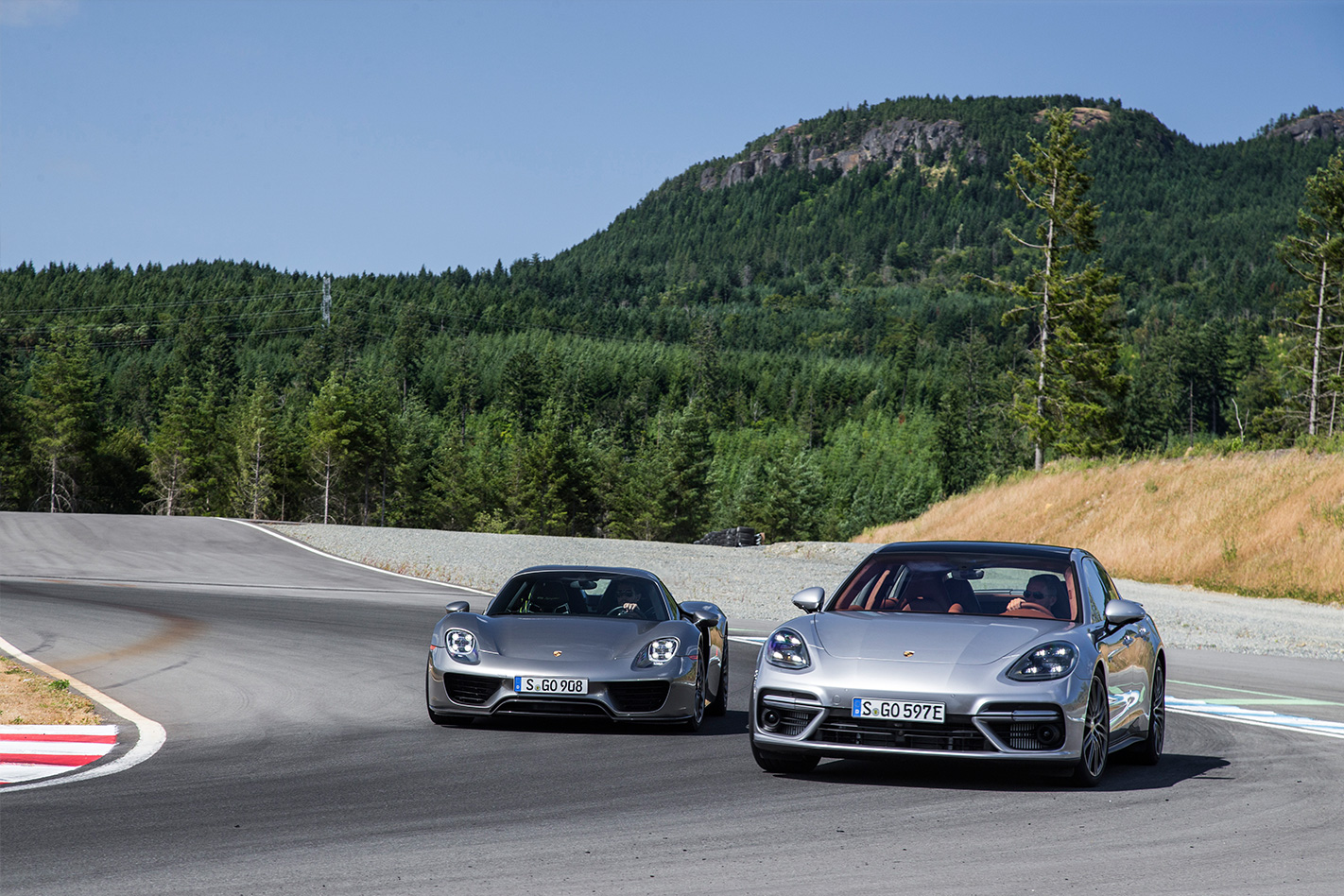
During our first blast in the hybridised Panamera Turbo S on Canada’s Vancouver Island we managed to temporarily bludgeon the fuel economy figure into the 20s, but in fear of Canada’s speed enforcement – even stricter than Australia’s, would you believe – most of our road driving was sedate, which brought a corresponding drop in thirst.

In default ‘E’ driving mode as prescribed by the steering wheel mounted selector, the accelerator has an obvious detent in its travel that politely discourages you from prodding through into its fossil fuel reserves, but turn the switch to ‘H’ and the notch in the throttle’s travel is removed.
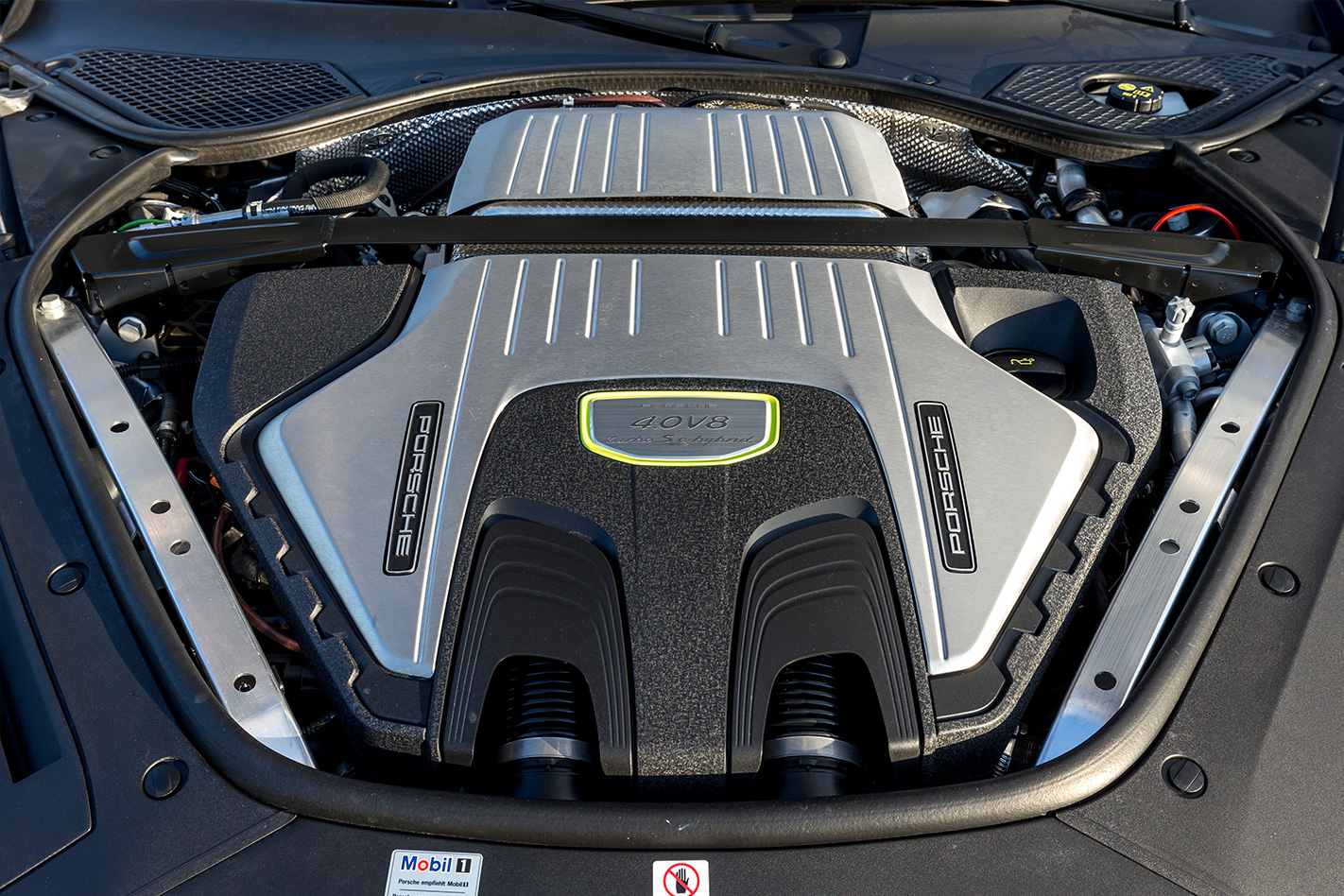
The 3996cc Porsche V8’s power is prodigious and the delivery broad, while the assistance of the 400Nm electric motor results in the most wonderfully muscular and willing powertrain.
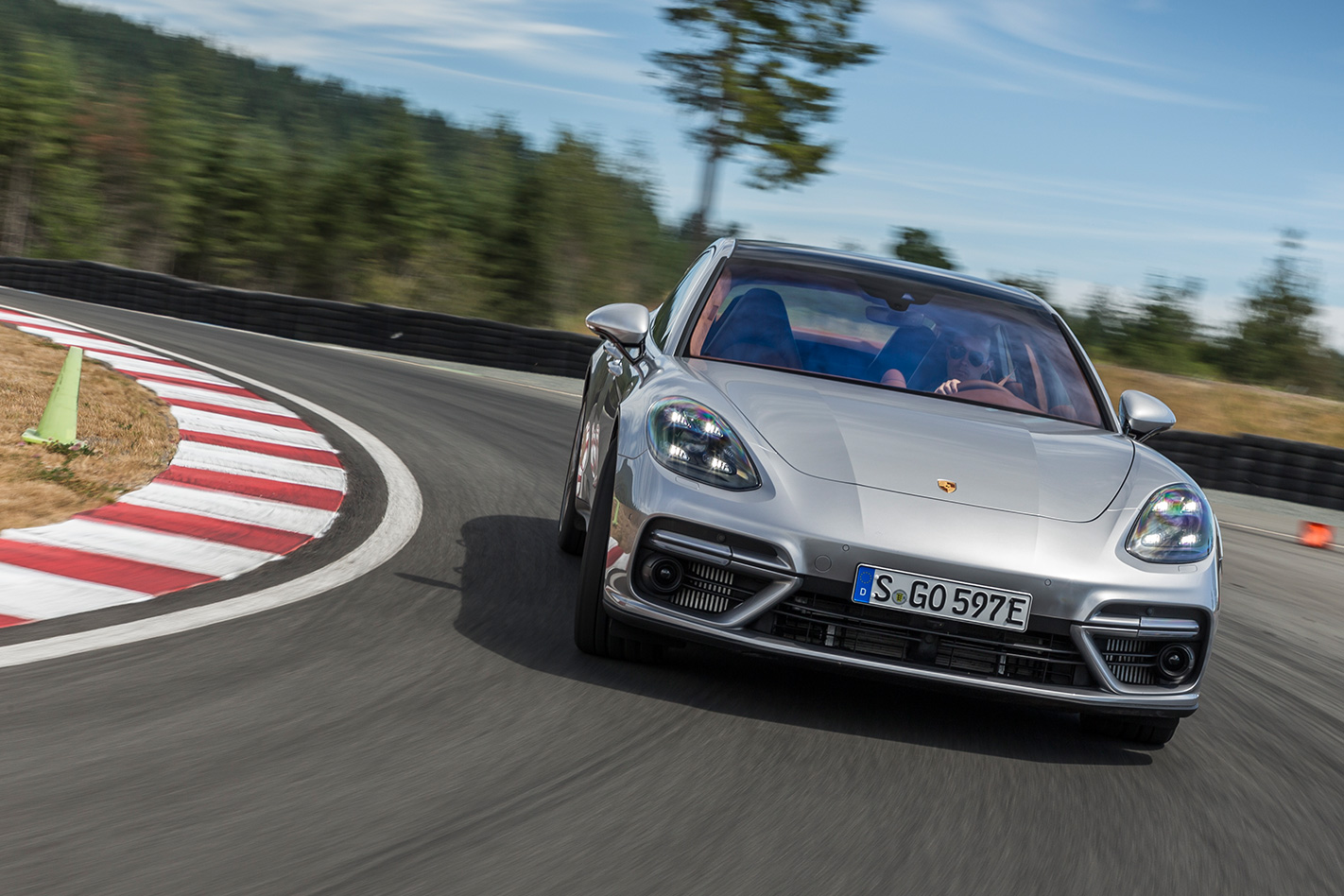
Despite its long 2950mm wheelbase and broad 1937mm body, the Panamera carves a surprisingly precise line. In tight turns, the optional four-wheel steering can be felt providing the effect of a shorter wheelbase, mid-corner grip is bountiful, and the standard-fit carbon ceramic brakes with monstrous ten-piston calipers provide terrific feel and unfading power.
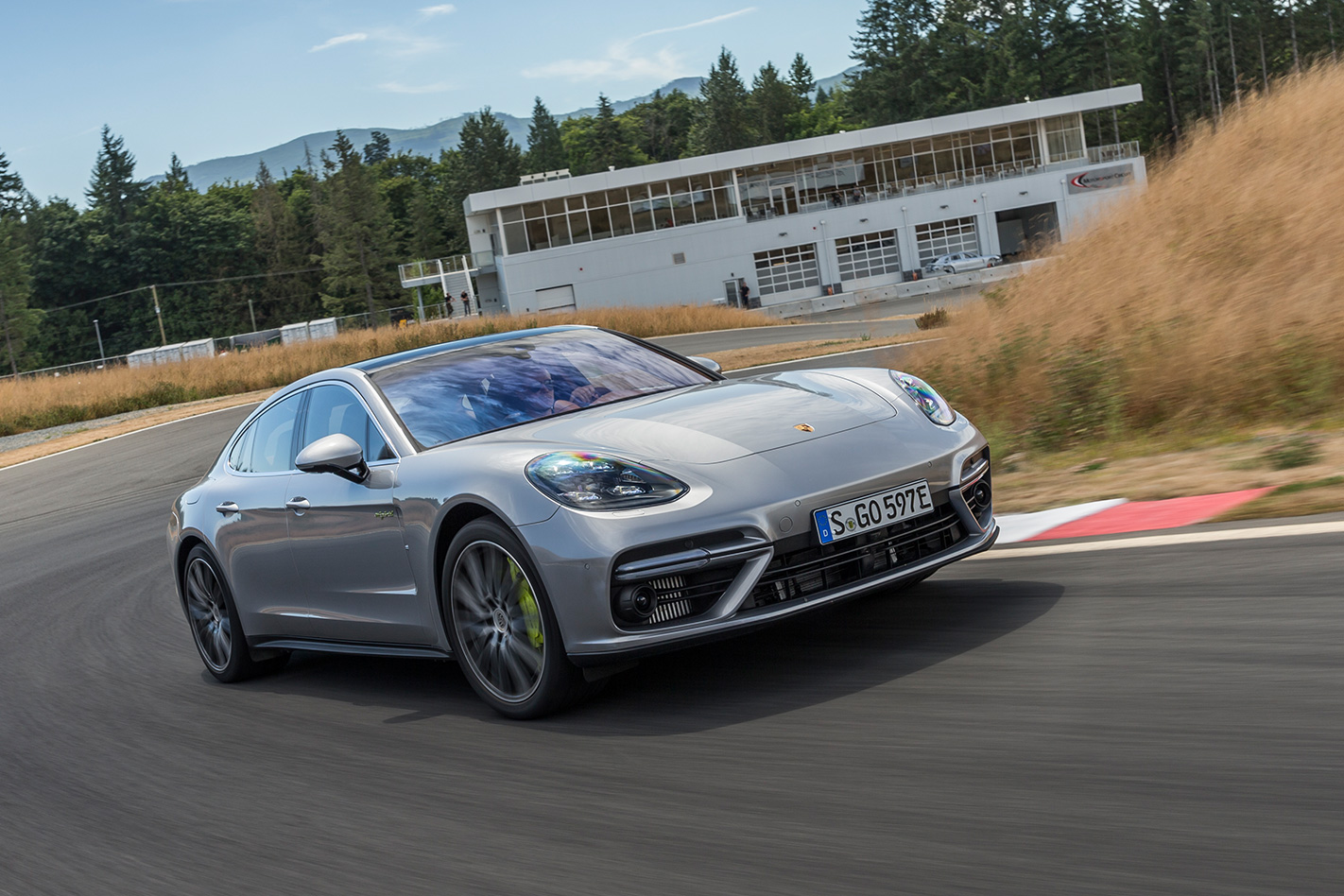
Under hard braking into the circuit’s steep descents, the tail can be shaken loose, revealing a delightful playfulness, yet it can be gathered up with the chatty steering in a manner that’s uncommon in cars of this weight and size.
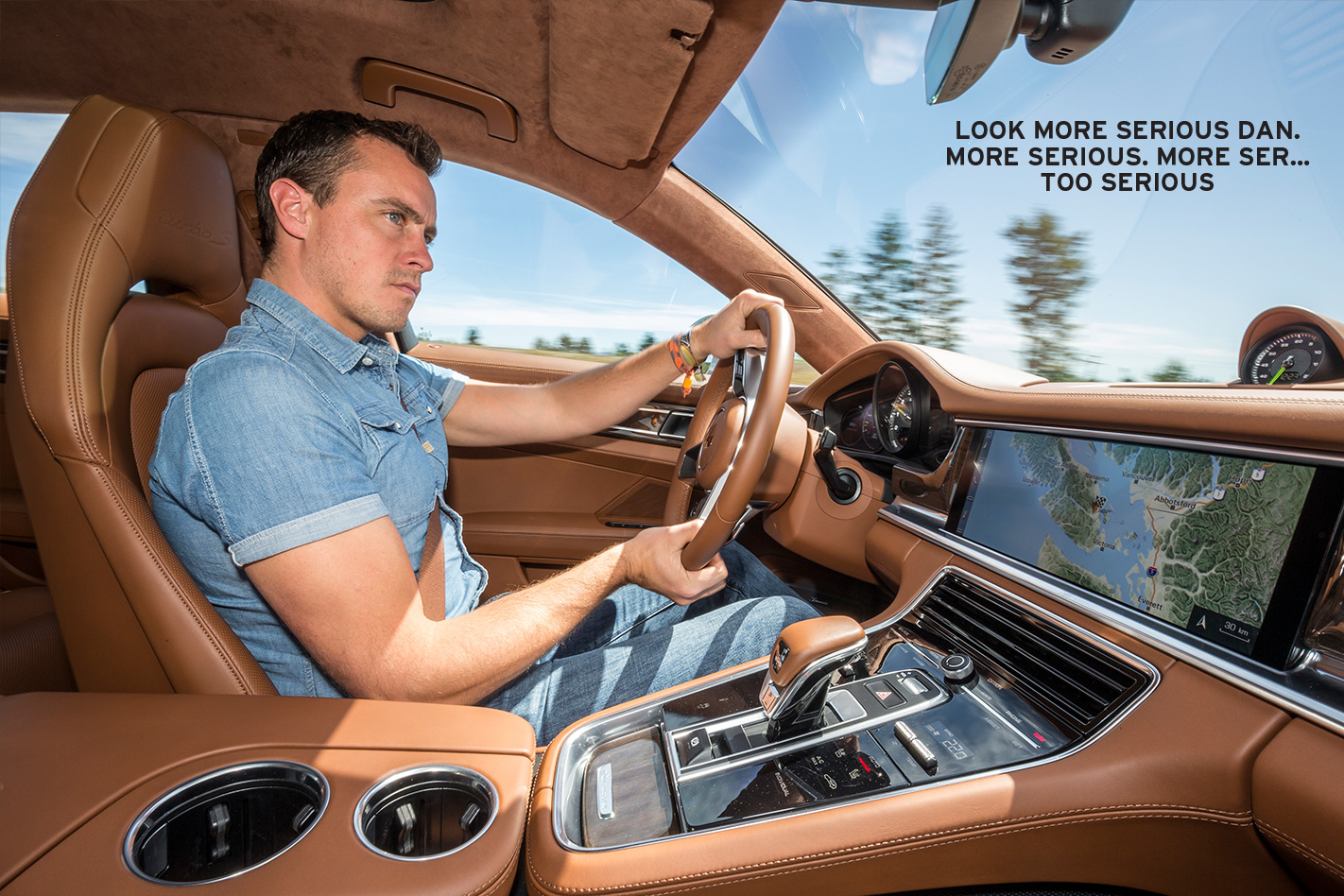
On Canada’s iconic pine-lined roads, the big four-seat proves to be an accomplished cruiser, which is precisely how most customers will use their Panamera. Although we didn’t do a back-to-back comparison, the Turbo S E-Hybrid’s ride seems just as polished as the Turbo’s and the comfort of the sports seats is stunning. Three-stage adaptive dampers and air suspension smooth all but the most offensive road imperfections and the cabin ambience is on a par with a BMW 7 Series or Mercedes-Benz S-Class.
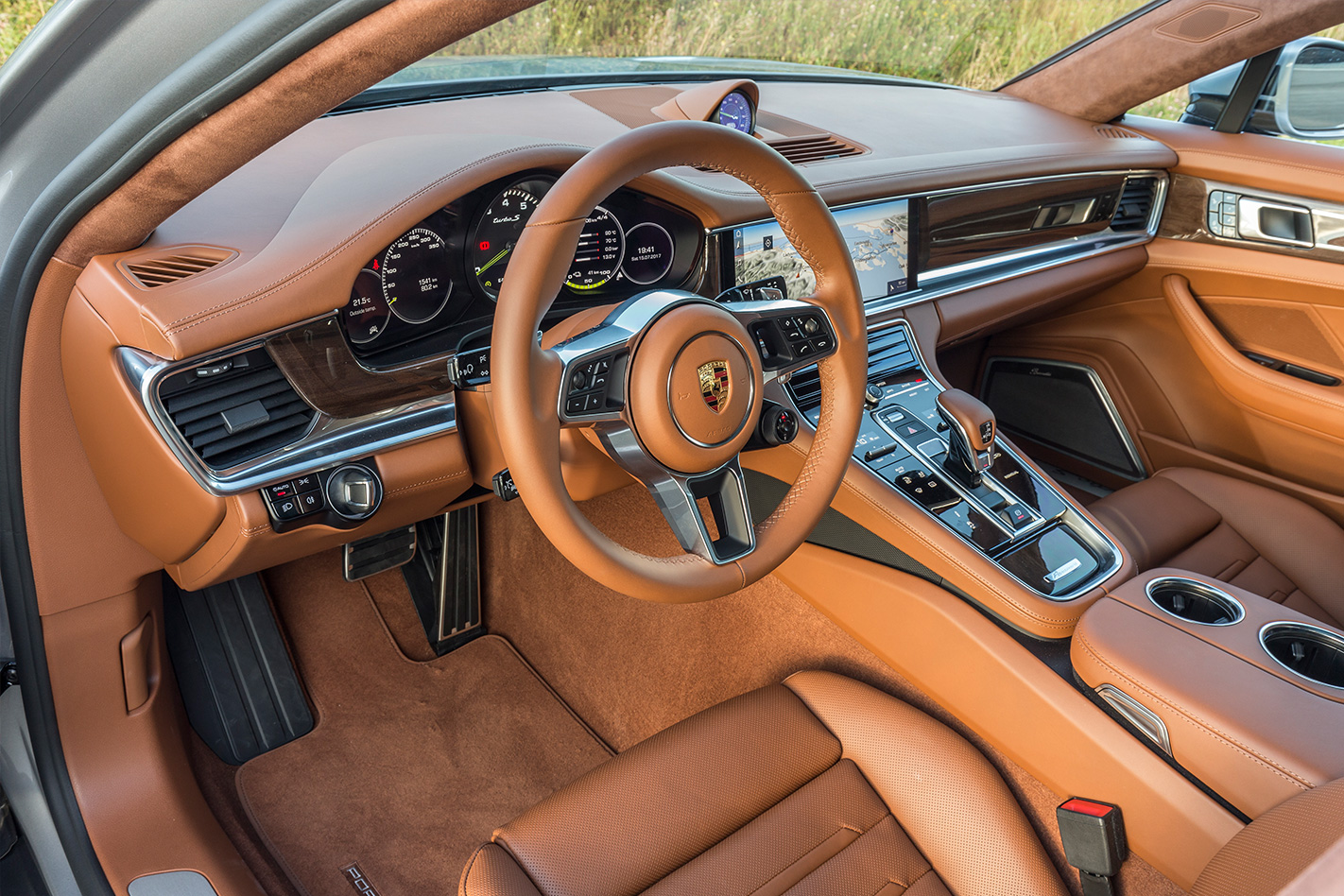
Quite where the Acid Green flashes will surface next in the Porsche line-up remains unconfirmed, but next year’s 992 911 seems a safe bet. Either way, the decision to begin the rollout of this new, performance-focused hybrid strategy with the Panamera as its ambassador, is a calculated move.
If the 911 had led the charge into electrified high-performance Porsches it’s likely to have caused seismic unrest, but thanks to the abilities of the company’s first hybrid range-topper, and its uncompromised teaming of performance and zero-emissions capability, Porsche’s electrified future is starting to make sense.
